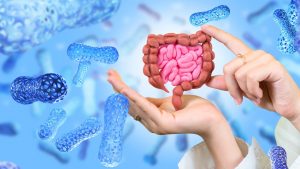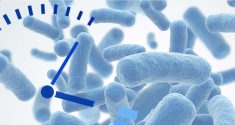The gut microbiome of infants oscillates in a circadian rhythm, even when cultured outside the body. Researchers report in the journal Cell Host & Microbe that this rhythm is detectable as early as two weeks after birth, but becomes more pronounced with increasing age. The findings come from a randomized controlled trial that also showed that diet has less influence on the development and composition of the infant microbiome than previously thought.
Diet Has Little Effect on The Growth of Infants or The Differences in Their Gut Microbiome
The researchers led by first author and microbiome expert Dirk Haller from the Technical University of Munich have discovered that the microbial ecosystem develops these circadian rhythms at a very early age of colonization. The experts have already demonstrated these rhythms in adults, but were not sure when these mechanisms first appear. While diet had only a minor influence on the development of the infant gut microbiome, the researchers showed that age plays a more important role. Nutrition plays a role, but less than the ageing of the gut. When they compared breastfed and pre-fed infants, the differences in microbiome colonization were marginal.
 In a randomized, controlled study, the researchers compared the development of the microbiome of infants who were exclusively breastfed with infants who received different types of infant formula: Infant formula without supplements, infant formula with bacteria derived from breast milk (bifidobacteria), infant formula with sugars imitating breast milk (galacto-oligosaccharides, GOS) or infant formula with bifidobacteria and GOS. A total of 210 infants took part in the study. To track the infants’ microbiome longitudinally, the team took stool samples at 0.5 months, 1 month, 3 months, 7 months and 12 months, as well as at 24 months for a subgroup of infants. They also noted the time of day when the stool sample was taken.
In a randomized, controlled study, the researchers compared the development of the microbiome of infants who were exclusively breastfed with infants who received different types of infant formula: Infant formula without supplements, infant formula with bacteria derived from breast milk (bifidobacteria), infant formula with sugars imitating breast milk (galacto-oligosaccharides, GOS) or infant formula with bifidobacteria and GOS. A total of 210 infants took part in the study. To track the infants’ microbiome longitudinally, the team took stool samples at 0.5 months, 1 month, 3 months, 7 months and 12 months, as well as at 24 months for a subgroup of infants. They also noted the time of day when the stool sample was taken.
The researchers found that diet had little effect on the growth of the infants or the differences in the infants’ microbiome. Although there were large differences, all infants showed a gradual increase in the diversity of gut microbes, and after 24 months there was no discernible difference between the groups. When they compared the different types of infant formula, they found that infant formula enriched with GOS had a better effect in promoting sustained levels of bifidobacteria compared to infant formula containing bifidobacteria.
Intestinal Bacteria Have an Intrinsic Mechanism That Enables a Kind of Adaptation to The Day and Night Cycle
However, there was a significant difference in the gut metabolite profile between exclusively breastfed and formula-fed babies. The gut metabolite environment differs dramatically between exclusively breastfed and formula-fed infants, which could have a fundamental impact on metabolic priming and many downstream effects. It can therefore be concluded that breast milk has a completely different effect on the metabolism in the infant’s gut.
The researchers also observed rhythmic 24-hour fluctuations in the abundance of the different microbiome species. When they took microbes from infants and grew them in a continuous culture in the lab, the bacteria settled into the same circadian rhythm – even in the absence of external light or host cues. Although circadian rhythms have been observed before in adult microbiomes, this is the first evidence that bacteria maintain these rhythms independently. When they are taken out, they retain these diurnal oscillations. According to the researchers, this is quite surprising because it suggests that the bacteria have an intrinsic mechanism that allows for some sort of adaptation to the day and night cycle, which could potentially give them an advantage in colonizing the human gut.
The scientists plan to further investigate the circadian rhythms of the microbiome in future studies. In particular, they want to determine whether individual bacterial species maintain their rhythms when isolated rather than cultured in complex communities, and look for the genes that control these rhythms. The next question for them is whether they can identify mechanisms in bacteria that control their circadian behavior.







